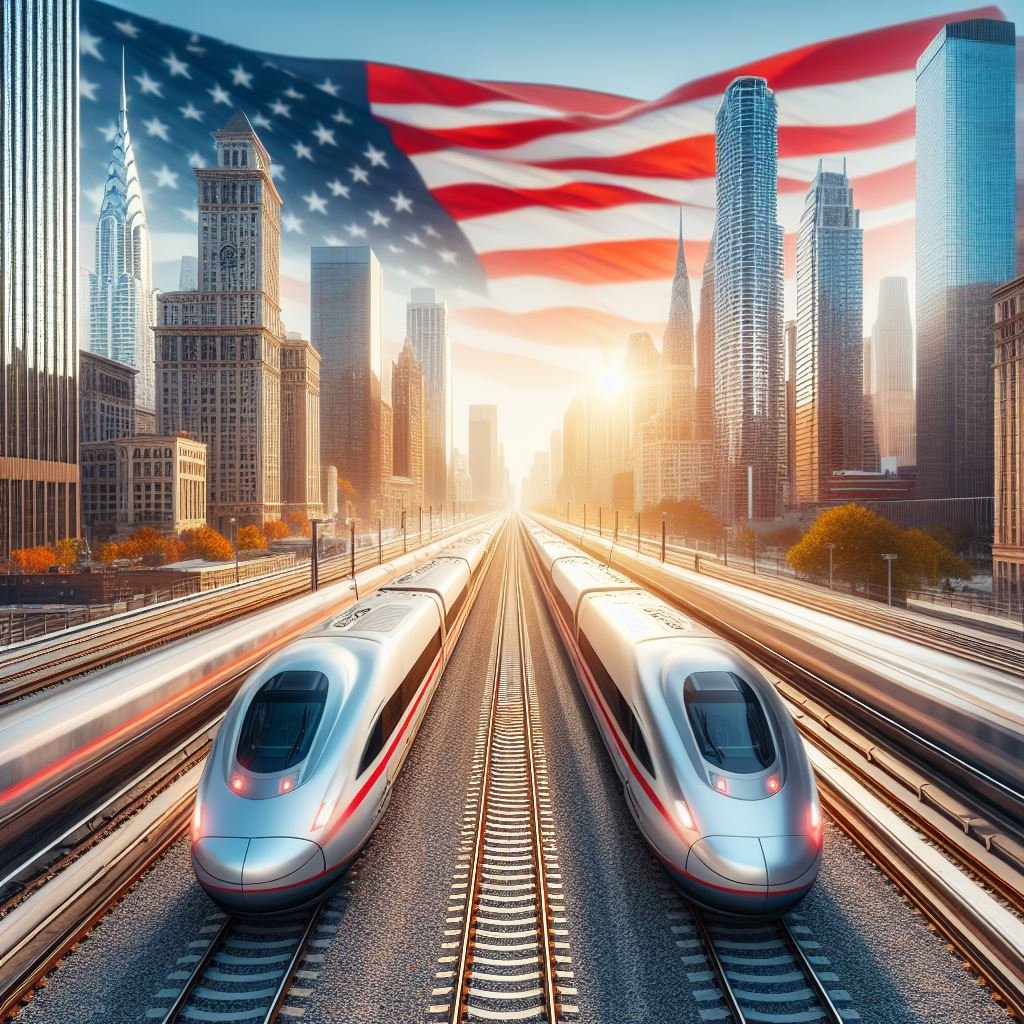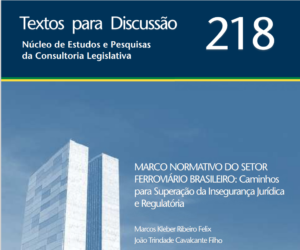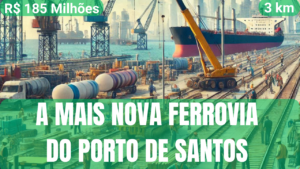The resurgence of private enterprises in American passenger railways is a recent phenomenon, spearheaded by Florida East Coast Industries — a direct descendant of the Florida East Coast Railways founded by Henry Flagler in 1892. This modern business phenomenon is highly relevant for understanding the potential future of the Brazilian railway market following the enactment of the new Railway Law.
In recent years, we’ve witnessed a significant shift in the U.S. railway landscape. Private enterprise is making a comeback in passenger railways, bringing promises of innovation, efficiency, and a renaissance of rail transport under very specific conditions, which we aim to discuss in this text.
The return of private initiative to American passenger railways is not just a milestone in transportation history but also reflects the social and economic changes that have occurred over the past century. For instance, the deregulation of railways in the 1980s had a profound impact on the industry, allowing for greater flexibility and innovation.
A Brief History of American Railways
To grasp the significance of this return, we must delve into the history of American railways and understand how and why private enterprise withdrew from U.S. passenger rail transport.
In the early 20th century, private railways dominated long-distance transport in America. However, with massive investments in American highways, the growth of the automobile industry, and advancements in civil aviation, private American railways gradually lost their passengers, without a corresponding reduction in supply costs due to regulatory impositions by the now-defunct Interstate Commerce Commission (ICC).
In the 1970s, many of these railways were on the brink of bankruptcy due to heavy deficits caused by regulatory restrictions. As a mitigating measure for these deficits and to prevent the exclusion of citizens from these transport services — laden with high positive externalities for the population — the U.S. government decided to create Amtrak.
Amtrak would thus be a public company dedicated to providing medium and long-distance passenger transport, previously handled by private railways, which would now focus exclusively on freight transport.
The exemption from passenger transport was not sufficient to balance the accounts of the hundreds of American private railways.
In the early 1980s, a new regulatory reform was enacted by the Staggers Rail Act that almost completely deregulated freight rail transport in the U.S..
This reform halted the abandonment of branches, increased service offerings, reduced freight prices, and turned deficits into profits for the railroads. The paradigm shift in regulatory policy was so significant that by the early 1990s, the ICC was abolished.
Many of the ICC’s functions were transferred to the newly created Surface Transportation Board (STB), particularly concerning the economic regulation of the freight railway industry.
Over time, the success of the American economy, the increase in household purchasing power, and the rise in the number of automotive vehicles in circulation created a new opportunity: the return of railways occupying the space dedicated to passenger vehicles.
Economic factors have made the return of private railways a viable option. With growing congestion on roads and at airports, railways offer an efficient and economical alternative, as well as a more sustainable one.
In the following video from CNBC, we can see how private rail companies in the US have specialized in freight.
The Right Confluence at the Right Time
After nearly a century without new greenfield railway constructions by the private sector, new passenger railway projects are beginning to emerge in America. This revival is the result of a confluence of economic, technological, environmental, and legal factors.
The resurgence of passenger rail transport can first be attributed to a series of economic factors. In many cases, due to constant traffic jams on roads and urban routes, it becomes more economical and faster for passengers to travel by train between cities than to drive, whether by car, taxi, bus, or ride-sharing services, especially when considering the total value of travel time. Sometimes flying isn’t even an option because the cities are too close, lacking airline services, or when they do exist, they are too expensive compared to using the rails. Americans have coined the phrase: “too long to drive, too short to fly,” to define this first condition.
Moreover, there must be demand. It’s not enough for cities to be at the right distance; there must be a robust flow of passengers with travel desires, whether for tourism or daily life, large enough to cover the costs of implementing railway services.
A third aspect is technological advancement, which has allowed for the development of faster and more comfortable trains, making train travel a more pleasant experience. We’re not talking about steam locomotives or compositions that don’t exceed 50km/h. These projects typically use electric trains with maximum speeds exceeding 200km/h.
Additionally, growing environmental awareness has also played a role, with railways emerging as an attractive option due to their greater energy efficiency compared to cars and airplanes. This has enabled better financing conditions and regulatory flexibilities that attract investors.
Last but not least, the U.S. federal government has launched a robust package of economic incentives and subsidies for private companies that can qualify in proposing new projects.
Lessons from the Brightline Case
Brightline is the first private railway to build a passenger line in the U.S. in nearly a century. Formed from the conglomerate that already owned the freight train line in eastern Florida, the company took advantage of its strategic position to duplicate the train line between Miami and Cocoa and from there build an entirely new single line to Orlando Airport, marging Florida State Raod 528.
Although not technically considered a high-speed train, since its maximum speed is “only” 200km/h, the introduction of the new railway service reduced the travel time from 5 hours to 3.5 hours. At a cost of over $6 billion, most of the line was built within the domain of the old freight railway. And the following segment was constructed alongside an already established highway, which certainly significantly reduced implementation costs.
The project was executed in phases, with the first opened to the public in January 2018, connecting Miami to Fort Lauderdale and West Palm Beach. Construction of the final stretch began in 2019 and was opened to the public in 2023, with a slight delay due to the COVID-19 pandemic.
Brightline not only built a new train line but also incorporated several technological innovations to improve the passenger experience. For example, the trains are equipped with high-speed Wi-Fi and power outlets at each seat, allowing passengers to work or entertain themselves during the journey.
Part of the business’s success lies in the use of real estate adjacent to the line for the construction of residential, office, commercial buildings, and even parking garages. Additionally, the profitability of the business can also be associated with lower implementation costs of the line in a flat territory, without legal entanglements with expropriations of domain strips, a secure revenue due to the high tourist demand in the region, and lower financing costs through Private Activity Bonds (PAB).
PABs or private activity bonds are securities issued by or on behalf of local or state governments to channel resources into private projects or activities of public utility. Through the PAB mechanism, Brightline was able to obtain tax-exempt interest rates, with lower capital costs than traditional corporate financing mechanisms.
Finally, sustainability is a crucial aspect of Brightline’s success. By opting for biodiesel-powered trains, the company not only reduces its carbon footprint but also demonstrates a commitment to environmental sustainability.
In the following video from The B1M, we can see how private rail companies in the US are trying to boost passenger rail lines.
Conclusion
The resurgence of passenger railway transport in the U.S. is a positive sign for the future of sustainable transportation and an important lesson that can be applied by Brazil, with the advent of the Brazilian Railway Law, which has already allowed the expression of private interest in at least three new passenger railway corridors by authorization here in Brazil.
The implementation of these new railway corridors, driven by private investments, not only reflects market confidence in the return on investments based on coherent passenger demand capture strategies but also signals a consistent improvement in institutional relations between the public and private sectors.
However, as with any major undertaking, there are risks and challenges associated. For example, good institutional relationships between different state entities and private investors that allow good coordination among other aspects of urbanism, sustainability, and mobility of the cities served by these projects.
This American renaissance is an excellent opportunity for Brazilian public entities, especially in our project financing market, which is very dependent on the corporate finance model, to the detriment of project finance, to adapt to the challenging new scenario. In addition to the notorious difficulties in obtaining environmental licenses.
The new investors will go through a long process of mindset adaptation so that we Brazilians can believe that public transport can be private. Over time, we hope to see more developments in this area and are eager to see how these projects will transform the transportation landscape in the U.S. and Brazil, bringing benefits to both users and investors.



